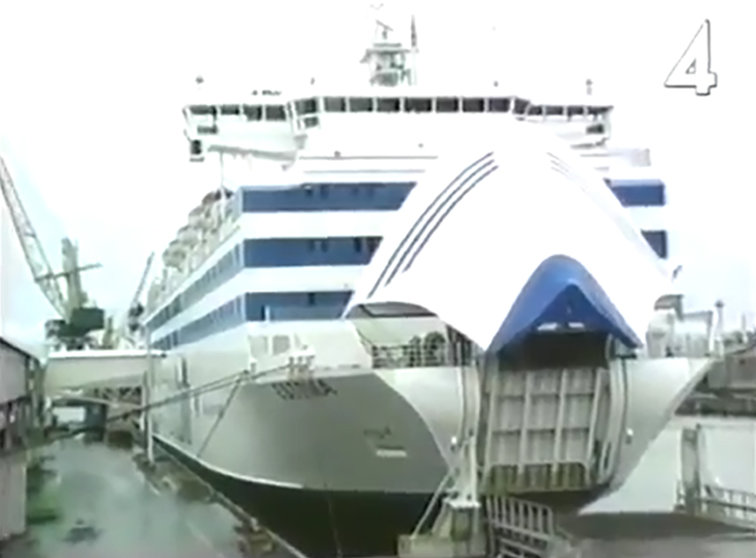What exactly caused the M/S Estonia passenger ferry to sink in 1994, causing 852 deaths from 17 countries? Did the governments of that time lie, attributing the disaster to the opening of the bow door? Why did the official investigation that concluded in 1997 not report that the hull of the ship had a hole 4 meters high by 1.2 meters wide on the starboard side?
Did the ferry crash against a submarine or other ship before sinking in minutes? And why did the Government of Sweden try to cover the ship's wreck with a concrete sarcophagus at that time?
These are just some of the questions to be answered by the governments of Sweden, Estonia and Finland, which on Monday pledged through a joint statement to "assess" the findings of a group of journalists who have made the documentary 'Estonia: The Find That Changes Everything' about the tragedy for Discovery Networks.
The ship sank in Finnish waters, in just one hour, near the island of Utö, in the early hours of 28 September 1994, while en route from Tallin to Stockholm.
A total of 852 people drowned and 137 survived. In 1997, investigators said the accident was caused by the bow door of the ship being wrenched, allowing water to enter the car deck. Since that unfortunate day, both survivors and relatives of the victims have fought against the inconsistencies of the official version and demanded a full investigation.

Image: Youtube/Screenshot.
Victims demanding answers
Now, the victims have more reasons than ever to continue demanding answers from the governments of Sweden, Estonia and Finland, which during these years have been reluctant to continue investigating what happened. In 1995, the area where the remains of the ship are was designated as a maritime grave by an international agreement and access and diving were prohibited.
The journalists' findings, made by exploring and filming the sunken ship's hull with the help of a remotely operated underwater robot, may change everything we thought we knew about a case whose truth has been buried under tons of seawater in the Baltic Sea for more than two decades.
The filming of the documentary has been peppered with controversy due to the prosecution of two Swedish citizens, who were charged with violating a maritime tomb. "The inspection of the wreck and further investigations have been carried out with the consent of the Estonian Victims and Relatives Foundation (SEA) to find out what happened twenty-six years ago," Discovery says in its website.

Image: Youtube/Screenshot.
A submarine in the area?
In summary, the journalists have been able to film a large hole located on the starboard side of the ship, below the waterline, which according to the experts consulted could only be caused by "a huge external force."
Did the ship hit a submarine before sinking? That is the most plausible explanation for Estonian Margus Kurm, former state prosecutor and head of the government's investigative committee looking into the sinking of the ferry in 2005-2009.
In an interview with ETV, Kurm said he is 'shocked' by the finding, which for him means that the ship "did not sink because of a bow visor breaking." "It was a collision with something large enough to create a four-meter long hole." "The most likely cause is that Estonia collided with a submarine," he added.
In another interview with the newspaper Postimees, he also said there was a Swedish naval operation ongoing at the time of the accident and the Swedish navy could have been involved in the events.
Attempt to cover it with concrete
This expert says that the hole in the hull would explain why and how quickly the ship sank. Also it would explain some testimonies from survivors, who said they had felt loud bangs before the sinking, and from several young members of the crew, who assured that they saw the bow ramp was closed.
Inside the ship, he says, there was a lot of water, but not enough to come from the open ramp.
Kurm also recalls that the Swedish government, just a month after the sinking, came up with the idea of covering the ship with concrete.
In his view, the Estonian government (which will lead the new investigation) should now carefully and unhurriedly analyze the new evidence. And also think of how to regain the public's trust.










